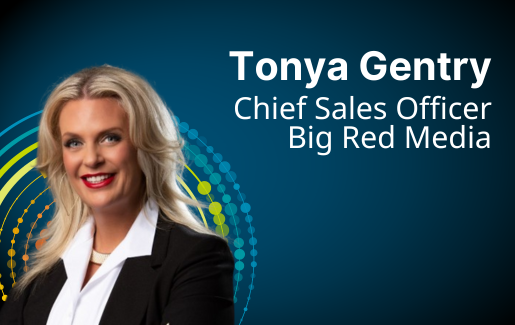 This is the quarter to create a strategy to use thousands of dollars in Market Development Funds (MDF) available to you as a channel partner. Depending on your tech stack, many (if not most) of your vendors have set aside money you can access to fund sales and marketing activities that drive business growth.
This is the quarter to create a strategy to use thousands of dollars in Market Development Funds (MDF) available to you as a channel partner. Depending on your tech stack, many (if not most) of your vendors have set aside money you can access to fund sales and marketing activities that drive business growth.
MDF are notoriously underutilized for various reasons, but overcoming barriers can make a significant impact for the MSPs who recognize the benefits, make a plan and execute. Consider these tips for finding and using MDF and making them part of your marketing strategy.
Related Content: Unlock Hidden Revenue: Getting Started with Marketing Development Funds
What Are MDF?
MDF are cash, usually reimbursements, that vendors provide to their partners to support a variety of marketing and sales initiatives. The idea is simple: Vendors benefit when partners grow their business, so they are willing to invest in marketing efforts that can drive mutual success.
Vendors will set aside dedicated funds each year or quarter, and the amounts vary. Some will give a few hundred dollars per partner, others a few thousand. The availability of funds can vary depending on the vendor's budget cycles and priorities. Some vendors also give an amount proportional to how much business the partner does with them, but most require formal enrollment in their partner program, said Tonya Gentry, chief sales officer, Big Red Media during a ChannelCon 2024 session titled Fueling Your MSPs Future: How Market Development Funds Can Drive Explosive Growth.
The key is to ask.
“I would go to every vendor that is in your stack and ask what kind of benefit program they have. A lot of them don’t have anything formal, but they will do something informally, such as a raffle prize or vendor booth prize,” Gentry said.
Why MSPs Are Missing Out
MDF is not completely “free” money, because the process of securing them can take time and persistence many MSPs don’t want to carve out of their schedules.
The request process is often simple but differs from vendor to vendor. Some require access through a form on their partner portals, while others prefer an email or even a phone call. Similarly, the requirements, deadlines, allowed activities and funding amounts available can vary dramatically.
“It’s challenging to keep up with every vendor’s requirements, and you must be able to navigate those requirements to consistently obtain the funds,” Gentry said. “Vendor contacts, requirements and the amount of funds available will change, so you must be aware.”
Planning and Tracking for Success
To get a handle on it all and increase your chances of receiving funds, you need to plan. Gentry suggests two methods. The first is approaching your vendors with a detailed marketing plan and asking them what they’re willing to fund. The second is engaging your account manager earlier and ensuring alignment by building your plan with their input. Vendors are more likely to fund initiatives that demonstrate a clear path to mutual benefits.
When planning to use MDF, the 5Ws (who, what, when, where, why) are critical, but the focus should be on ROI potential— especially leads and appointments. That means keeping detailed records of your costs, the number of leads generated, sales closed and how long appointments take. You’ll likely need to present this data to your vendors as part of your MDF request or required reporting after the activities.
Timing is also key. Start discussions with vendors as soon as possible, as MDF funds are often allocated on a first-come, first-served basis. Some vendors operate on an annual cycle, while others might allocate funds quarterly.
What Vendors Like to Pay For
To maximize the potential of MDF, consider the following strategies that vendors are typically eager to fund:
- In-person events: Breakfast/lunch and learns, cocktail hours, sporting events, speaking engagements or other creative ideas to engage prospects or upsell
- Digital marketing: Search engine optimization (SEO), pay-per-click ads, social media ads or email drip campaigns to reach people online
- Content marketing: Blog posts, case studies, white papers or eBooks, newsletters and video content to educate audiences and keep them engaged
- Trade shows: Vendor funding and assistance with banners, giveaways and speakers if you secure a speaking slot at the event
- Virtual events: Cost-effective webinars, live Q&A sessions or virtual conferences featuring expert speakers, or panel discussions to draw large audiences
That said, there are expenses individual vendors won’t cover. For example, one large vendor won’t cover activities by third-party marketing companies. Others won’t cover travel costs, online ads, employee salaries, print advertising or anything that cannot be measured, activities that don’t mention the vendor specifically, or activities that mention competitors. However, the prohibition lists are very short (if they exist at all), so there’s always an opportunity available.
Payment and Payoffs
Vendors might cover up to half of the costs, but it's essential to manage your expectations: Don’t expect one vendor to fully fund your initiatives. And remember vendors usually require an invoice. While some may pay as you get invoiced, the majority will only release funds post-event.
But the payoffs are real. Gentry shared four real-life success stories (and some great ideas):
- A three-webinar series featuring vendor-provided speakers, contributed content and a wrap-up webinar by the MSP that strengthened relationships with vendors and resulted in significant lead generation.
- A virtual event with a press release that resulted in $117,000 in new revenue and a subsequent speaking opportunity with the local chamber of commerce.
- A webinar panel featuring an FBI agent, a cybersecurity vendor and a local insurance expert that led to a joint venture partnership and increased attendance at subsequent events.
- An in-person March Madness event at a sports bar that featured a brief business presentation and then fun bonding that generated leads.
Gentry suggests putting together a case study detailing the outcomes once your MDF-funded activities are complete. This can be a powerful tool for securing future MDF from any vendor. And if your plans change before you use them, let vendors know.
“Once they allocate money for you, that money doesn’t go to somebody else. So keep that in mind if you decide not to do it, or if something changes,” she said. “If you don’t use it, it just sits there and gets wasted.”
CompTIA Community MSP Guidebook
Start cultivating a culture of process efficiency. Download the CompTIA Community MSP Guidebook now.

 Add CompTIA to your favorite RSS reader
Add CompTIA to your favorite RSS reader

